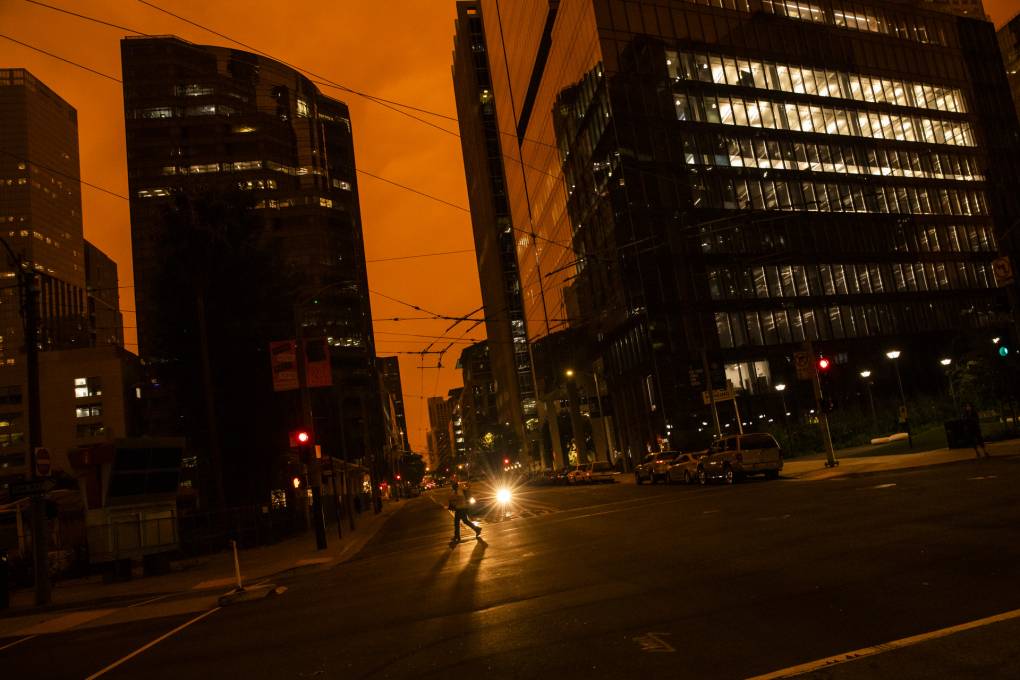The rising threat from wildfire smoke was on full display last fall, when dense plumes from several fires burning across Northern California blocked out the sun, shrouding the Bay Area in orange-tinged darkness.
That smokestorm in August and September polluted Bay Area air for a record 30 straight days, at the apex of a fire season that saw more than 5 million acres burned up across the state.
Wildfire smoke now accounts for half of the fine-particle pollution that wafts across the West, according to a recent study led by Marshall Burke, an Earth scientist with Stanford University.
“In 2020, we saw roughly 60 days with wildfire smoke that was in the air that we breathed, up from 10 to 15 days just a decade ago,” Burke told KQED. “That’s a really dramatic increase in our exposure to wildfire smoke and is leading to measurable changes in the air quality in the Bay Area.”
Burke spoke last week with KQED’s Brian Watt about the increasing danger of wildfire smoke in California. The following excerpts are edited for length and clarity.
We know that wildfires are worse partly because of warming temperatures. How much worse could our air get?
Burke: Projections suggest that climate change has increased wildfire risk by about 50% so far. It’s already had a large effect on the number and particularly the severity of the wildfires we’ve seen. And projections going forward suggest that we could see even a doubling on top of that — very, very large projected increases in future wildfire risk and in the associated smoke that comes with those wildfires if we don’t do anything about climate change.
How do you think this problem of air pollution compares to other kinds of climate impacts like rising sea levels or the worsening wildfires themselves?
Burke: This is something we look at in our research, and we find for much of the U.S. and particularly people in the West, exposure to wildfire smoke might be one of the main impacts of climate change they experience in their lives. Most of us don’t live right next to the coast. In the Bay Area, if we do, we might actually not be directly exposed to changes in sea level. The wildfires and really the smoke from wildfires can reach us in ways that many of the other climate impacts don’t. We see that as one of the main climate impacts we will experience as Californians.

